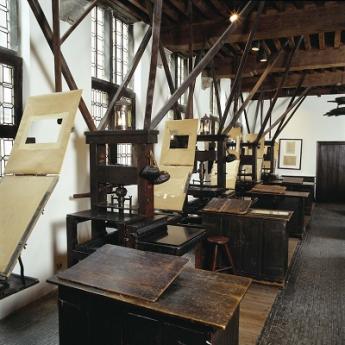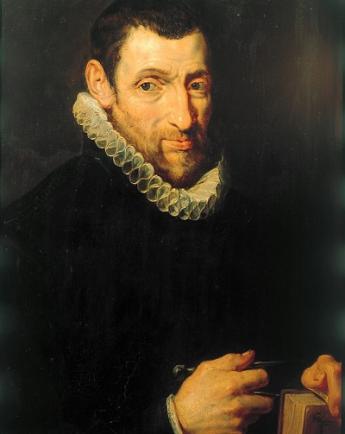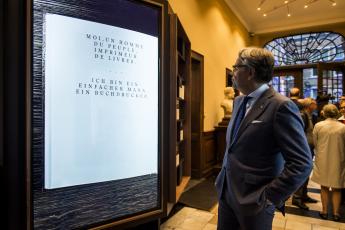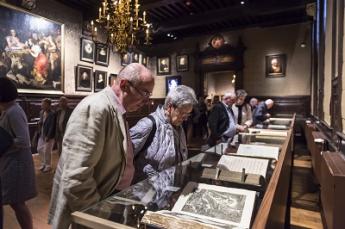The new Plantin-Moretus Museum in Antwerp â âThe Book is Centralâ
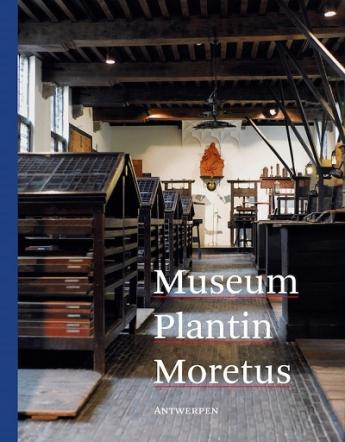
On 30 September 2016, one of the most treasured places for printing history and the history of the book re-opened after extensive renovations, the new Plantin-Moretus Museum. Various festivities accompanied the opening on three consecutive days and invited the public to take part in the fascinating history of the museum.
The new museum takes the visitor on a unique journey of the life and legacy of the publisher Christoffel Plantin and his inlaws Moretus whose achievements had put Antwerp on the map. The biggest authors and scientists of their time found their way to Antwerp’s Vrijdagmarkt and Plantin was able to spread their ideas throughout the world.
The Plantin-Moretus Museum is located on the Vrijdagmarkt, a historic square in the middle of Antwerp’s fashion district, which is experiencing a rapid resurgence thanks to the arrival of new, trendy shops. As a result, the square is becoming more like what it was 400 years ago; the place in the city home to the creative industry and revolutionary at the time. Book printing boomed in this district in the 16th century, most of Antwerp’s nearly eighty printers were based here. That number underlines Antwerp’s predominance as a city of printers, mainly due to Antwerp’s thriving port. New products and new knowledge arrived here sooner, and scientists came to Antwerp to have their books printed and disseminated from here. Antwerp in the time of Plantin was a crossroads of knowledge.
Of those eighty Antwerp printing presses, those of Christophe Plantin, the largest in Western Europe, have been preserved and are shown in the museum.
Christoffel Plantin – the Netherland’s most significant publisher
Christoffel Plantin was the Netherlands’ most significant publisher, born near Tours in France who settled in Antwerp around 1550. His publishing house grew into a multinational firm with branches in Leiden and Paris. With the multilingual bible Biblia regia he was able to convince the Spanish King Philip II of his high-quality printing and was given the privilege of exporting liturgical works to Central and South America. He was the founding father of the Plantin - Moretus publishing dynasty. ‘De Gulden Passer’, the family home and printing works on Antwerp’s Vrijdagmarkt, was in the family for nine generations.
Plantin was as a family man, manager, businessman and printer of quality printed matter. In 1555 Plantin established one of the largest printing firms, the Officina Plantiniana, a successful book business which set itself apart from the competition thanks to its quality in relation to both form and content. His company was a family firm and his daughters were involved from a young age.
Plantin was the favoured publisher of scientists and humanists. He challenged them to publish better and more accurate scientific works. It was on the Vrijdagmarkt that Kiliaan laid out the basis of the Dutch dictionary and the Dutch edition of Valverde meant that ‘barbers and surgeons’ were kept up to date with developments in medicine. Maps by Ortelius were sold and publications by Lobelius, Dodoens and Clusius gave botany a real boost. In the ‘Tiende’ Simon Stevin argued in favour of the decimal system and centuries later this work inspired Jefferson when designing the dollar.
But Plantin was also a trendsetter when it came to design. He created a new market for books illustrated with refined copperplate. He introduced variety to elegant French typefaces in the Southern Netherlands, such as the Garamond, a font that can be found on every computer today. With his childhood friend Peter Paul Rubens, grandson Balthasar developed the lay-out of the Baroque book.
Over 300 years later, in 1876 Edward Moretus Plantin sold the whole site including its archives to the city of Antwerp so that it could be turned into a prestigious museum. Its archives are recognised as Memory of the World and the museum as UNESCO World heritage.
New exhibition design and presentation
Exhibiton design team Studio Caroline Voet and Leen De Brabandere were tasked with the re-design of the museum and UNESCO Heritage site: “Our goal in this authentic, UNESCO- protected setting is to bring to life the activities of the home and workshops. The visitor takes a time machine to the 16th century, meets Plantin as a family man, manager, printer, humanist and visionary publisher and experiences how a world-class entrepreneur developed his business.”
Interactive spaces offer hands-on opportunities and new workshop spaces. Digital media will be present, but will play a subordinate role: the book is central.
A new depot and reading room allow the museum to responsibly store the collection and preserve it for future generations.
The museum has always been a destination for book collectors and bibliophiles and is an absolute Must when visiting the city of Antwerp. The re-opened museum is a wonderful example of teaching the history of publishing and printing to the general public; opening up the world of rare books and showcasing the importance of printing and publishing throughout history.
For all information about the museum, please visit the museum’s website.
Museum Plantin-Moretus
Vrijdagmarkt 22
2000 Antwerp
tel. +32 3 221 14 50
fax +32 3 221 14 71
museum.plantin.moretus@stad.antwerpen.be
The museum is open every day from 10 am to 5 pm; closed on Mondays.
Admission to the reading rooms from Monday to Friday from 9.30 am to 4.30 pm.
